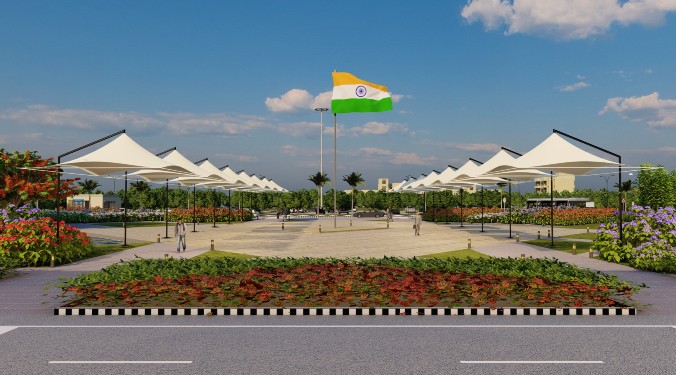“Constant ability to innovate makes Dalmia unique as a cement manufacturer,” says Dr S. P. Pandey, Deputy Executive Director, Quality Management and R&D, Dalmia Bharat Ltd.
Dalmia is one of the leaders in cement manufacturing. Since it has started its journey in 1939, it has grown manifolds in terms of capacity. In a conversation with ACE Update, Dr S. P. Pandey talks about growing urbanisation and how it’s going to add value to the cement industry.
Indian and construction and infrastructure industryIndia’s economy is big and getting bigger. Engineering and construction (E&C) industry in India is one of the fastest-growing economies in the world. It accounts for about 11 per cent of India as GDP. The construction industry significance to the Indian economy can be gauged by its growing contribution to gross domestic product (GDP) — from 5.1 per cent in 2001–02 to 7.9 per cent in 2010–11. By 2020, India is expected to emerge as the world’s third-largest construction market. Large infrastructure investments and growing urbanisation will fuel this growth.
Additionally, the construction industry creates an annual asset base of $80 billion and generates employment for more than 40 million people. Liberalisation of government regulations and a deliberate strategy on the part of the Indian Government to promote infrastructure spells opportunity for E&C companies. Construction is the second largest economic activity in India after agriculture, and has been growing rapidly.
The total construction market in India for FY14 was $157 billion, an increase of $4 billion over FY13. Infrastructure accounts for 49 per cent, housing and real estate 42 per cent and industrial projects 9 per cent. Industrial construction is contributed by expansion projects from various manufacturing sectors. Real estate construction can be sub-divided into residential, commercial, malls/multiplexes and so forth.
X-FactorsDemand for real estate has been one of the drivers of construction sector growth over the last 10 year. Improvement in economic conditions has the potential to drive demand for real estate, as housing continues to be a favoured investment asset among Indian households. The construction activity involved in different segments differs from segment to segment.
Construction of houses and roads involves about 75 per cent and 60 per cent of civil construction respectively. Demand-supply gap for residential housing, favourable demographics, rising affordability levels, availability of financing options as well as fiscal benefits available on availing of home loan are the key drivers supporting the demand for residential construction.
The proposed increase in allocation in the 12th Plan (2012-2017) will translate into a healthy business for construction companies. According to a technical committee set up by the Ministry of Housing & Poverty Alleviation, the total provides a big investment opportunity. Building of airports and ports has construction activity in the range of 40-50 per cent. For industrial projects, construction component ranges between 15-20 per cent. Within a particular sector also construction component varies from project to project.
Dalmia and present market scenarioConstant ability to innovate makes Dalmia unique as a cement manufacturer. It has been a leader in cement manufacturing since 1939. Its cement plants in India have grown manifolds in terms of capacity. It is also acquiring some new plants to increase the volume and expand further.
Dalmia Cement has given several vital projects from dams to critical defence installations and created special cements for special applications with newer and innovative technologies, which includes airstrip, oil well and railway sleeper cement.
Cookie Consent
We use cookies to personalize your experience. By continuing to visit this website you agree to our Terms & Conditions, Privacy Policy and Cookie Policy.









